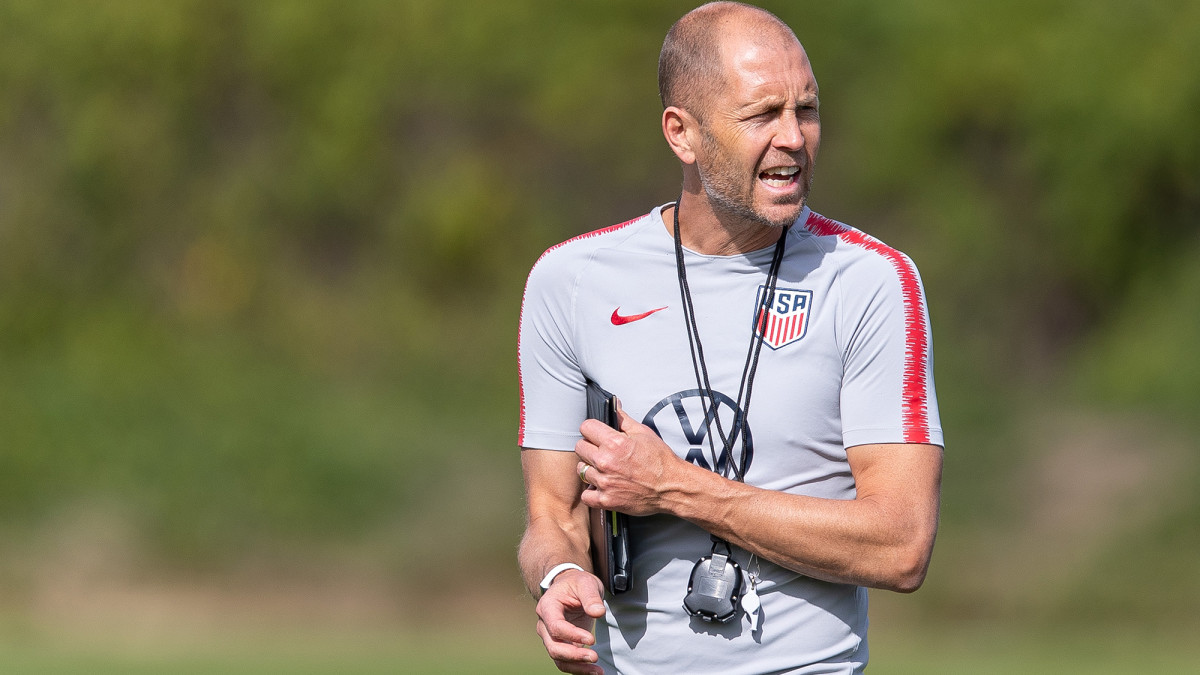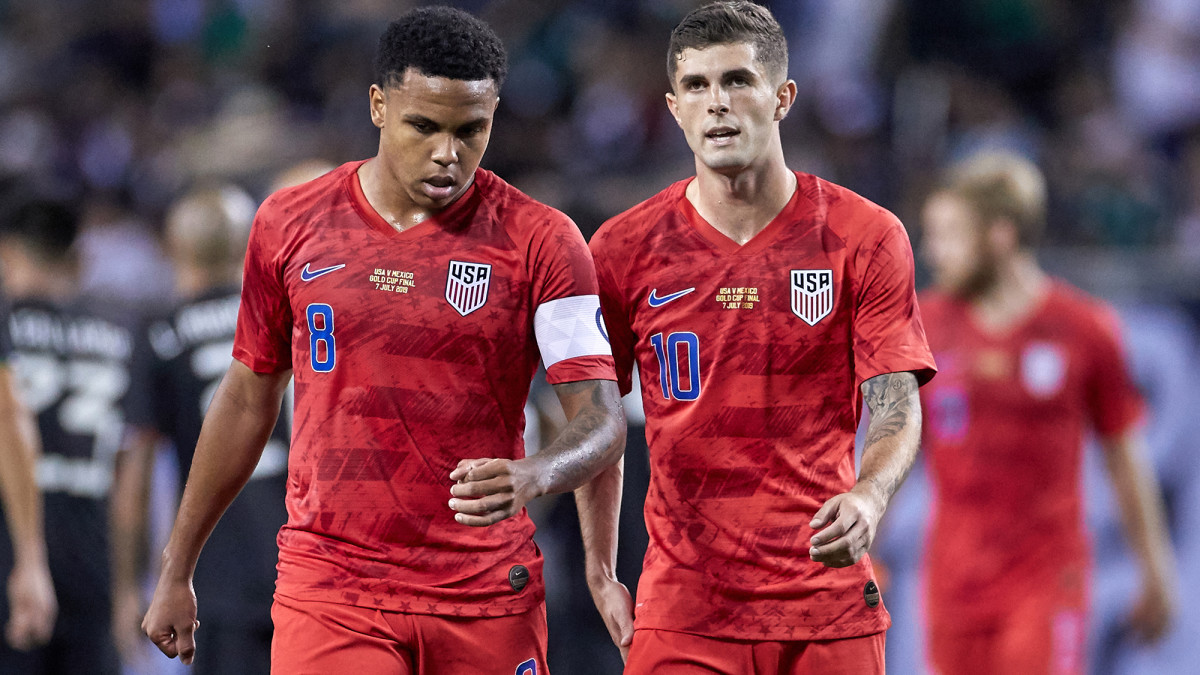After a Dormant 2020, USMNT Has a Complex Player Puzzle to Solve in 2021
Tournament draws are designed to provide some clarity. They establish a structure, a set of opponents and help lay out a technical and tactical road map toward a desired destination. You should know a lot more about what’s ahead once it’s over than you did going in.
Then there’s Monday night’s Concacaf Gold Cup draw, which prompts as many questions as it answered. Yes, the USA and coach Gregg Berhalter learned they’ll be facing Canada, Martinique, and the survivor of a playoff featuring Haiti, Saint Vincent and the Grenadines, Bermuda and Barbados in the group stage of next summer’s continental championship tournament. But considering the youth and untested nature of the American player pool, the long layoff triggered by the pandemic and then the unprecedented complexity and congestion of the 2021 competition calendar, we know very little about the U.S team that will contest those matches.
Berhalter joked following the draw that he’s been spending this fallow period playing Football Manager.
“I’ve been playing that every single day—competing in that, setting formations,” he teased.
But the current challenge and the tasks ahead kind of resemble something out of the video game: Monitor and study an expanding pool of players almost entirely digitally; consider how they might best fit together on the field, and establish appropriate position profiles and potential relationships; consider a player’s status within his club, as well as its relationship with the federation; and then try to game plan for five separate competitions all likely to kick off from March through September 2021.
“You become a coach in theory now, and not in reality. That’s the challenging part of it,” Berhalter said of the past seven months.

If the coronavirus cooperates, reality will hit hard next year. For the senior team, the first engagement on the calendar is the March international window, which likely will represent Berhalter’s first chance to gather together both his European- and MLS-based players since the fall of 2019. That’ll end a wait of about 16 months. In early June, the USA, Mexico, Honduras and Costa Rica will contest the Concacaf Nations League finals, finishing up the new competition that began in 2019. Then comes the Gold Cup, which will run from July 10 through Aug. 1. There, the USA will try to wrest back the crown from Mexico and claim its seventh continental title. And finally in September, the road to Qatar begins with the first two or three matches of Concacaf’s new octagonal qualifying round (FIFA is contemplating three-match international windows, one or more of which could conceivably take place next fall).
And that’s not all. The postponement of the 2020 Summer Olympics impacts the schedule as well. Concacaf’s qualification tournament probably will take place in March and/or April, and then the U-23 tournament in Japan is July 22-Aug. 7, or during the Gold Cup. A significant chunk of Berhalter’s young U.S. core is Olympic-eligible.
The decisions about which competitions to prioritize, how to best prepare for World Cup qualifying and when to opt for rest over repetitions will be challenging, and they’ll likely make or break Berhalter’s biggest year yet.
“Next year, 2021, represents a chance to win two trophies with the Nations League and the Concacaf Gold Cup, and then to get a really good start to qualifying,” Berhalter said Monday night. “One thing I would say is that there are a lot of competitions and what that means is opportunity for players. It’s opportunities for players to show that they belong, that they should be part of the first team, so to speak. No matter what competition we’re in, every time a player steps on the field they prove they can wear the jersey and that they want to be part of the starting group, the squad, whatever that may be.”
From that, it seems safe to assume that Berhalter isn’t going to grind his varsity into dust. It’ll save them from some wear and tear, plus give him the opportunity to see a few different faces as he contemplates the team that’ll start the octagonal next September.
“The player pool that we’re scouting now is actually expanding, because we want to make sure we’re getting every guy who has an opportunity to play,” Berhalter said, rattling off the names of several young MLS players who’ve caught his eye in recent months. “If I asked you, is it reasonable for a player to play a whole [club] season, then go to Nations League, then go to the Gold Cup, then start preseason again without a break, it’s probably not reasonable for that.
"So we’re going to have to juggle the squad a little bit—still be competing for trophies, but there will be a certain amount of juggling we need to do.”
Initially, Concacaf planned to begin the final round of World Cup qualifying next June, before the Gold Cup. Now that start almost certainly has been pushed to September, however, giving Berhalter the opportunity—if he so chooses—to see his top players in the Gold Cup environment before qualification begins. If he brings something close to an ‘A’ team to the Gold Cup, then the likely time for rest would be during June. That’s just one potential scenario, however. The June window includes room for four matches (including the two Nations League games), giving those players called in ample time to train and play.
“When you think about getting the whole group together, we’ll have an opportunity in March to do that. We’ll have an opportunity in June to do that, and then the Gold Cup could be an opportunity. And then it’s qualifiers,” Berhalter said. “It’s still looking at the players’ workload and the players’ schedule, and we have to be mindful of that. That’s really important in this whole process. But we certainly want to get our group together, get our group playing together before qualifying.”

The Olympics add another wrinkle. There appears to be an increasing amount of quality at the U.S. youth level. The U-20 team has made three straight World Cup quarterfinals and won two straight Concacaf titles, and the senior squad boasts a lot of U-23 talent. Considering all that, plus the humbling failures during the past two Olympiads, the pressure on U.S. Soccer, Berhalter and U-23 coach Jason Kreis will be raised. Clubs aren’t obligated to make players available for U-23 competition. But would the USSF try to negotiate their release for the sake of fielding a stronger team at qualifying and then in Japan? Would an Olympic run mean more to a 19- or 20-year-old than the first of what’ll likely be several Gold Cups? It’s yet another layer Berhalter must consider.
“It’s not cut and dried. It’s not clear, right? You can talk about an opportunity for a young player to go to the Olympics and compete for a medal in the Olympics, it’s a tremendous honor,” Berhalter said. “It’s going to come down to working really closely with Jason, looking at our player pool, looking at the workload of the guys, and then trying to make the best decision possible.
“We won’t get every one right. I know that,” he acknowledged. “But by and large, we want to make really good decisions to make sure every team has both the opportunity to win a trophy and then we’re also being mindful of what the players have been doing.”
Berhalter’s long-awaited opportunity to be on the field with his players should come in November, when U.S. Soccer is trying to arrange two friendlies in Europe. Following that, at the end of a year like no other, another set of unique challenges awaits.
